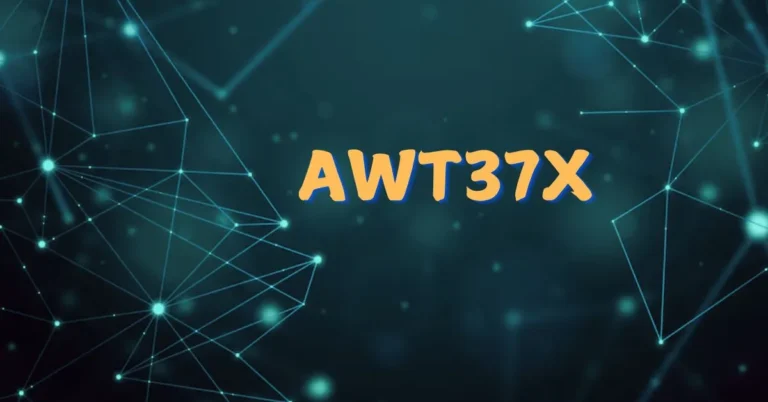Incestflox: Understanding the Digital Phenomenon Behind Online Taboo Culture
In the ever-evolving landscape of online communication, new terms constantly emerge to describe trends and subcultures. One such term, Incestflox, has gained attention across social media and discussion platforms.
Rather than referring to a specific act, Incestflox represents a digital phenomenon — the clustering of communities and conversations around taboo, controversial, or forbidden relationship themes in fictional or creative contexts.
The concept highlights how online anonymity, algorithmic exposure, and user curiosity can combine to amplify unconventional subjects. This article explores Incestflox from social, psychological, and ethical perspectives, examining what it means, how it evolved, and why it has become a point of cultural discussion.
What Is Incestflox
The word “Incestflox” blends “incest” with “flock,” symbolizing a collective fascination with taboo subjects online. It doesn’t necessarily indicate participation in immoral behavior; instead, it points to the social phenomenon where individuals gather in digital spaces to discuss, analyze, or critique media containing taboo storylines.
From ancient literature like Oedipus Rex to modern entertainment such as Game of Thrones, creative works have long explored complicated family dynamics as a reflection of human psychology, power, and tragedy.
The difference today lies in accessibility — digital platforms make such discussions far more visible, shareable, and searchable than ever before.
In this sense, Incestflox represents how taboo narratives transition from private contemplation to public discourse, challenging social boundaries and encouraging debate over what is acceptable in art and media.
Origins and Evolution:
Early Online Communities
The origins of Incestflox can be traced to late-20th-century online forums. Early internet communities like Usenet groups, Reddit subforums, and 4chan boards allowed users to connect anonymously over niche interests.
Anonymity provided freedom — people could express curiosity, critique, or fascination with controversial themes without real-world judgment. Over time, this openness evolved into digital subcultures centered around storytelling, creative exploration, and counter-mainstream thinking.
Platform-Based Growth
As the web evolved, Tumblr, Reddit, and fan-fiction sites became central to this movement. Tumblr’s visual creativity and freedom encouraged experimental storytelling; Reddit offered topic-specific discussions; and anonymous boards such as 4chan allowed for bold, uncensored conversation.
These spaces contributed to the visibility and normalization of taboo discourse — not in practice, but in conversation, analysis, and critique.
The “flox” aspect of Incestflox signifies the collective clustering of users, a digital flock united by shared curiosity and storytelling experimentation.
Uses and Applications:
Curiosity and Emotional Exploration
One of the key reasons users engage with Incestflox content is psychological curiosity. People are naturally drawn to explore the boundaries of morality, identity, and relationships through fictional narratives.
In safe, fictional contexts, audiences can confront complex emotions such as shame, guilt, desire, or conflict — without real-world consequences.
Creative and Storytelling Spaces
Writers, artists, and media analysts often use taboo subjects to challenge societal norms and express artistic rebellion. These creative outlets allow individuals to question power structures, emotional dependencies, or family dynamics that mirror real-life struggles.
Through online storytelling communities, users engage in symbolic, metaphorical, or therapeutic writing, exploring dark themes for emotional processing and creative experimentation.
Sociocultural Dialogue
Beyond creativity, Incestflox also drives social reflection. By analyzing uncomfortable subjects, users discuss topics such as ethics in media, freedom of expression, and the influence of online algorithms in promoting sensitive themes.
Potential Benefits:
Advocates of exploring taboo themes in controlled, academic, or fictional contexts often highlight potential benefits:
- Empathy and Emotional Understanding:
Confronting challenging themes in literature or media can help audiences develop deeper emotional intelligence and perspective-taking skills. - Critical Thinking and Cultural Awareness:
Exposure to unconventional ideas pushes people to question societal constructs and media ethics, fostering independent thought. - Creativity and Open-Mindedness:
Engaging with controversial storytelling stimulates imagination, encouraging creators to break stereotypes and find new forms of expression.
However, psychologists and educators stress the importance of balance. Without proper context or education, exposure to such material could lead to misunderstanding or desensitization. Healthy discussions, therefore, must always prioritize ethics and awareness.
Psychological and Social Implications
Emotional Impact and Desensitization
Research suggests that exposure to taboo or controversial material can evoke strong emotional reactions. Some individuals may feel discomfort, stress, or anxiety, while others may experience emotional detachment over time.
Repeated exposure in online spaces can sometimes reduce sensitivity to moral boundaries, affecting empathy and social judgment.
Social Behavior and Community Influence
Online communities discussing taboo themes can influence group behavior. In some cases, constant interaction with boundary-pushing content may normalize extreme opinions or erode traditional ethical lines.
However, structured, moderated discussions — particularly in academic or analytical spaces — can help users process content safely and maintain perspective.
Expert Insights and Research Studies
Experts in media psychology emphasize that exposure to taboo themes affects individuals differently based on personal background, emotional stability, and intent.
- Studies show that curiosity-driven engagement may encourage empathy and understanding of complex characters or moral dilemmas.
- Conversely, unmoderated exposure without reflection can contribute to emotional numbing or the trivialization of serious issues.
- Neuroscientific research highlights that controversial media activates regions of the brain linked to moral reasoning and conflict evaluation, suggesting that such content indeed challenges how we interpret ethics and relationships.
For educators and parents, the key lies in guided discussion — teaching young audiences how to critically evaluate media instead of consuming it passively.
Legal and Ethical Considerations
Regulatory Frameworks
Laws governing taboo or sensitive content vary worldwide. Many countries enforce strict regulations against the production or distribution of explicit or illegal material.
While academic analysis or fictional depiction may be legal, real or exploitative content remains strictly prohibited.
Platforms like Reddit, YouTube, and Tumblr implement age restrictions, reporting mechanisms, and AI moderation to prevent harmful exposure.
Ethical Responsibility of Creators and Platforms
Content creators and platform moderators face an ongoing ethical challenge: balancing free expression with public safety.
Responsible creators must ensure their material avoids exploitation or harm, framing discussions within educational, artistic, or critical contexts rather than sensationalism.
Ethical Debates:
Consumption Ethics
Audiences play a vital role in shaping online culture. Ethical media consumption involves critical reflection — questioning how one’s viewing habits affect both personal mindset and social values.
Consuming taboo-themed media for artistic, analytical, or psychological learning is vastly different from normalizing harmful behavior. Awareness, maturity, and intention define ethical participation.
Distribution Ethics
On the distribution side, questions arise about whether platform algorithms prioritize engagement over responsibility.
When controversial material gains popularity through clicks and shares, it can unintentionally magnify harmful narratives.
Thus, many experts advocate for algorithmic transparency, content labeling, and educational initiatives that promote ethical digital participation.
Role of Social Media and Algorithms
Social media algorithms determine what users see — amplifying content that triggers emotional or controversial responses. This system can rapidly turn a niche discussion like Incestflox into a viral cultural moment.
While engagement metrics benefit platforms, they can also spread harmful, misleading, or morally sensitive material beyond intended audiences.
To counter this, major platforms employ:
- AI-powered moderation tools to detect and filter explicit or exploitative material.
- Human moderators for contextual decision-making.
- Fact-checking partnerships and community guidelines to protect vulnerable users.
Despite these efforts, maintaining a balance between expression and responsibility remains an ongoing struggle in digital governance.
Media Representation:
Incestflox, as a reflection of cultural curiosity, is not unique to the internet. Humanity has long used mythology and storytelling to grapple with uncomfortable truths.
Ancient Greek tragedies explored fate, sin, and guilt through familial relationships — serving as moral lessons rather than endorsements.
Modern series like Game of Thrones or House of the Dragon revisit similar motifs, portraying complex psychological conflicts and political metaphors.
The difference lies in audience interaction:
What was once private literary analysis is now a public, algorithmically-amplified conversation, turning individual interpretation into collective commentary.
Sociocultural Impact:
Digital spaces blur the lines between private thought and public discourse. Through Incestflox, society witnesses how taboo subjects can ignite dialogue about freedom, censorship, and morality.
While some view this openness as cultural progress, others see it as evidence of declining ethical standards.
In truth, both sides reflect valid concerns — freedom of speech must coexist with social accountability and mental-health awareness.
As online users increasingly confront sensitive material, education about media literacy becomes essential. Recognizing fiction as exploration — not endorsement — helps preserve ethical integrity.
Educational Role:
Teachers, parents, and media educators play an important role in guiding young users through digital environments.
By teaching critical media literacy, society can transform curiosity into constructive analysis.
Encouraging debates around storytelling, ethics, and digital influence fosters informed, emotionally intelligent communities rather than reactionary or exploitative ones.
Future Outlook:
As online communities continue to evolve, taboo-related discussions will likely remain part of cultural exploration.
The future of Incestflox lies not in sensationalism, but in research, policy, and ethical design.
Key priorities include:
- Developing transparent algorithms that minimize harmful amplification.
- Expanding digital ethics education for users of all ages.
- Encouraging responsible storytelling in creative and academic spaces.
By reframing sensitive discussions as opportunities for learning and reflection, the internet can mature into a space where freedom coexists with empathy and respect.
Conclusion:
Incestflox symbolizes more than a single online trend — it represents how digital society negotiates taboo, freedom, and responsibility in real time.
While the topic originates from controversy, its study opens important conversations about psychology, media ethics, and human curiosity.
In a connected world, understanding why certain themes attract attention helps us design safer, smarter platforms and communities.
Ultimately, the goal isn’t censorship but context — ensuring that digital exploration fosters awareness, compassion, and accountability.







